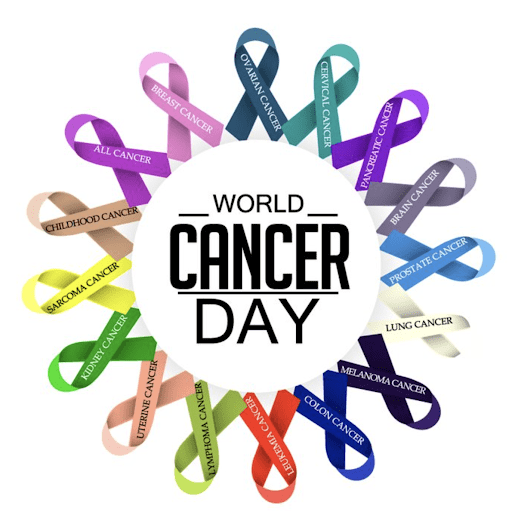Throughout 2021, we have made a pledge to share our education and experiences, to ensure inclusivity across the board. Each month, we will be releasing communications in line with national and international awareness campaigns. Last month we looked at Women’s Health, which you can read here. This month we are looking at World Cancer Day, UK National Heart Month and Raynaud’s Scleroderma Awareness Month. Cancer is a disease where abnormal cells divide without control causing tumours to form and can invade nearby tissues. The Cancer cells can also spread to other parts of the body through the blood and lymph systems. There are more than 100 types of cancers. On the 4th of February World Cancer Day is recognised to raise awareness of the disease and support cancer research. Cancer Incidence: More statistics can be found here. Did you know? ‘There is a great need for more robust cancer data on ethnicity; as the quality of ethnicity recorded in routinely collected health data remains poor. This raises concerns around the completeness and accuracy of analysis when using existing data’ – Macmillan Charity Innovative Trials are currently supporting a Phase 3 study in Metastatic Castration-Resistant Prostate Cancer. This study originally intended to have diversity outreach visits to sites. Due to site selection being based on Ethics Committee approvals, visits were only general community outreach and not diverse. As low as 0.8% African Americans were represented at one site, so efforts to deliver diversity outreach in future continues. The NHS and Cancer Research UK (CRUK) are developing new inclusion strategies of all ethnic communities in cancer studies. Some of CRUK’s key priorities include reducing cancer inequalities, developing a more diverse community for staff, volunteers and research and making information inclusive, relevant and accessible. The NHS have released three short videos for Reducing inequalities in BME patient experience of cancer care regarding bias, communication and dignity. Cardiovascular disease (CVD) is a general term for conditions affecting the heart or blood vessels. CVD includes all heart and circulatory diseases, including coronary heart disease, angina, heart attack, congenital heart disease, hypertension, stroke and vascular dementia. CVD Incidence: Did you know? Prevention is at the heart of the NHS long term plan to tackle heart disease called CVDPREVENT to reduce obesity, alcohol and smoking. Scleroderma is an uncommon condition that results in hard, thickened areas of skin; and sometimes problems with internal organs and blood vessels. This is caused by the immune system attacking the connective tissue under the skin; and around internal organs and blood vessels. This causes scarring and thickening of the tissue in these areas. There are 2 types of systemic sclerosis: There’s no cure for scleroderma, but most people with the condition can lead a full, productive life. The symptoms of scleroderma can usually be controlled by a range of different treatments. In the UK, scleroderma has an incidence rate of 4 cases per million per year; with a prevalence of 30 cases per million. All age groups may be affected, but it is common between 30 to 50 years of age. Did you know? There are annual tests for scleroderma available including – pulmonary, cardiac, kidney, blood pressure and pain tests. Patients who have normal pulmonary function tests at the time of presentation are unlikely to develop severe Pulmonary Fibrosis. Renal disease usually occurs within the first five years of diagnosis. Adopting a multidisciplinary approach could provide patient education and a self-management plan. Patients should report any changes in their condition. Self-help groups provide an invaluable source of support. Treatment can include proton pump inhibitors and antibiotics. Prognosis is associated with the extent of skin and organ involvement. Young age, African-Caribbean ethnicity, anaemia, elevated ESR, pulmonary and renal involvement indicate a more severe prognosis. Survival rates over 10 years are 71% for Limited cutaneous systemic sclerosis, and 21% for Diffuse systemic sclerosis. Raising awareness of these diseases empowers us to recognise any signs or symptoms early; and having accurate information can help us make informed decisions about our health. Early detection saves lives. A recent UK study found that for 8 common cancers – bladder, bowel, breast, cervical, womb, malignant melanoma, ovarian and testicular cancers – survival is 3 times higher when diagnosed early. ‘This year’s World Cancer Day’s theme, ‘I Am and I Will’, is all about you and your commitment to act. We believe that through our positive actions, together we can reach the target of reducing the number of premature deaths from cancer and noncommunicable diseases by one third by 2030.’ #WorldCancerDay #IAmAndIWill Equality, Diversity and Inclusion continues to be high on our agenda. We are working behind the scenes to push this forward. Keep your eyes peeled for more. Read our previous Awareness blog around Women’s Health here. Find out how we’re working with clients to ensure greater patient diversity in clinical trials.World Cancer Day | UK National Heart Month | Raynaud’s and Scleroderma Awareness Month
Innovative Trials are passionate about ensuring our diverse population is adequately represented within medical research. Whether it is wanting to see more people from underrepresented communities choosing science as a career and pushing for greater patient diversity in clinical trials or focusing on what we are doing internally to celebrate and promote equality and diversity.
 World Cancer Awareness
World Cancer AwarenessDiversity and Inclusion in Cancer

UK National Heart Disease Awareness

Diversity and Inclusion in Heart disease

Raynaud’s and Scleroderma Awareness
Scleroderma Incidence:
Prevention and Treatment
Conclusions
